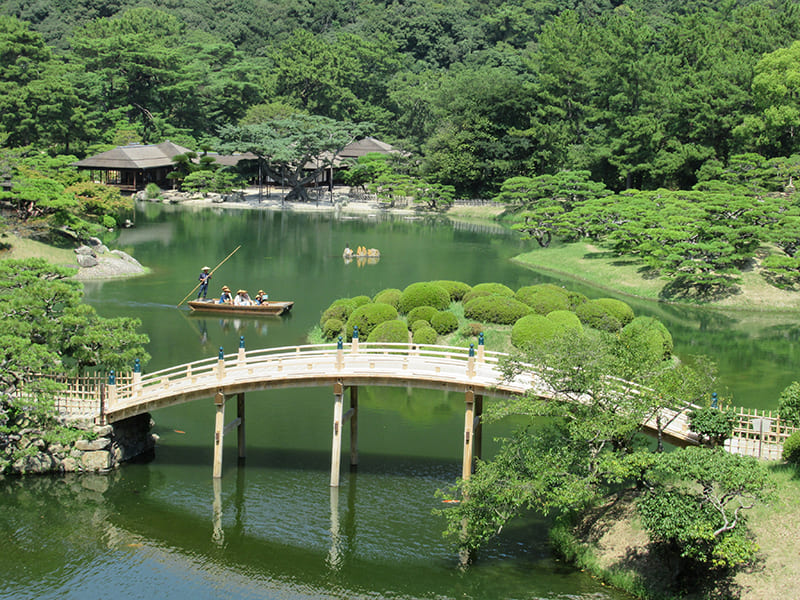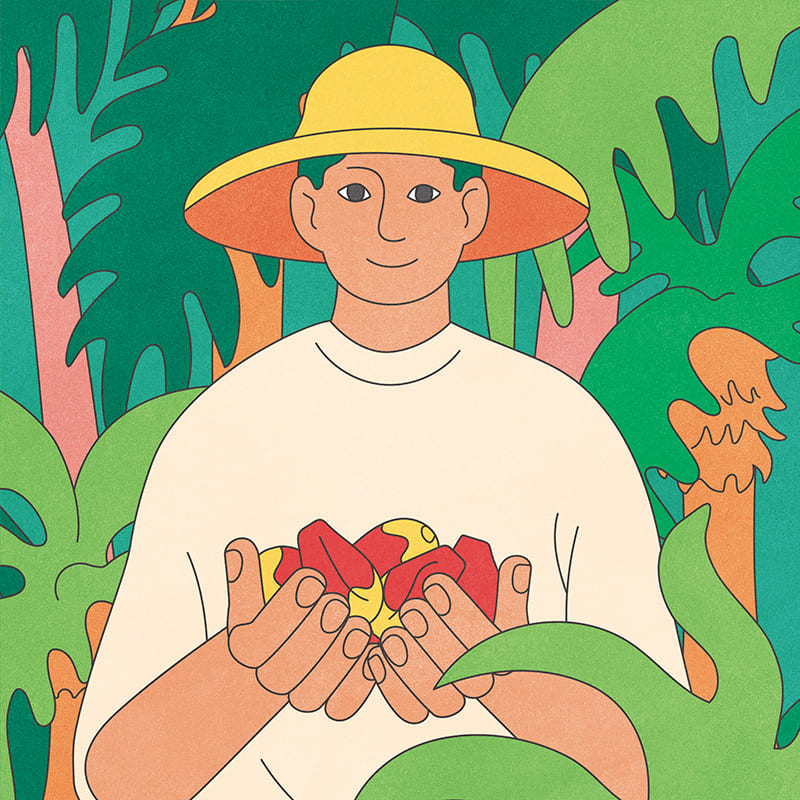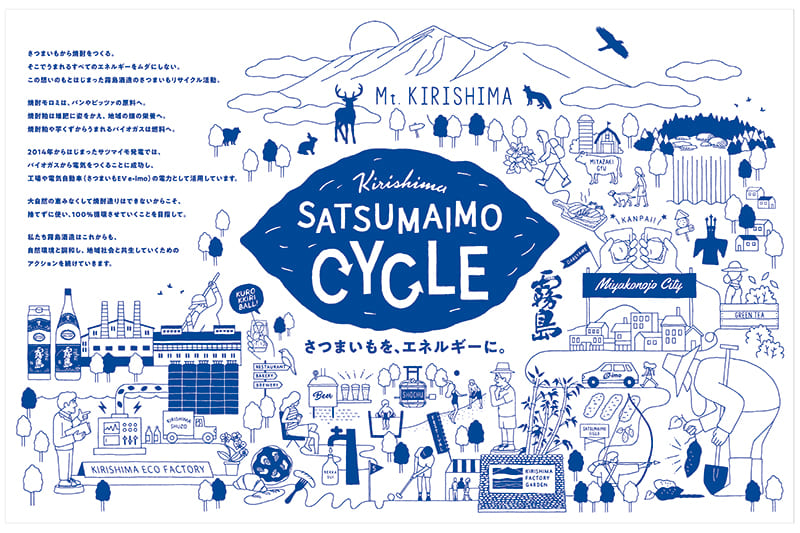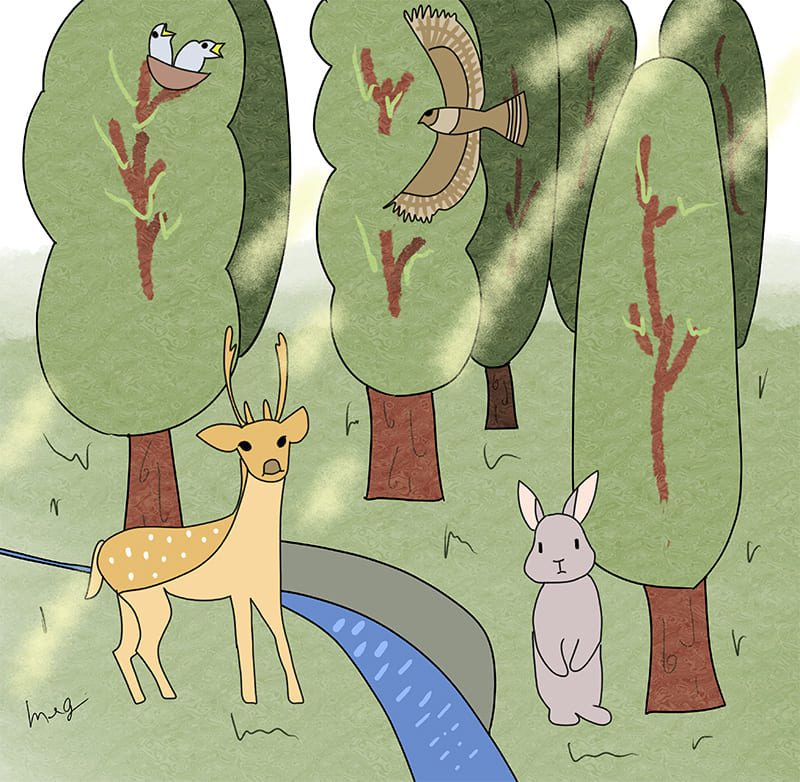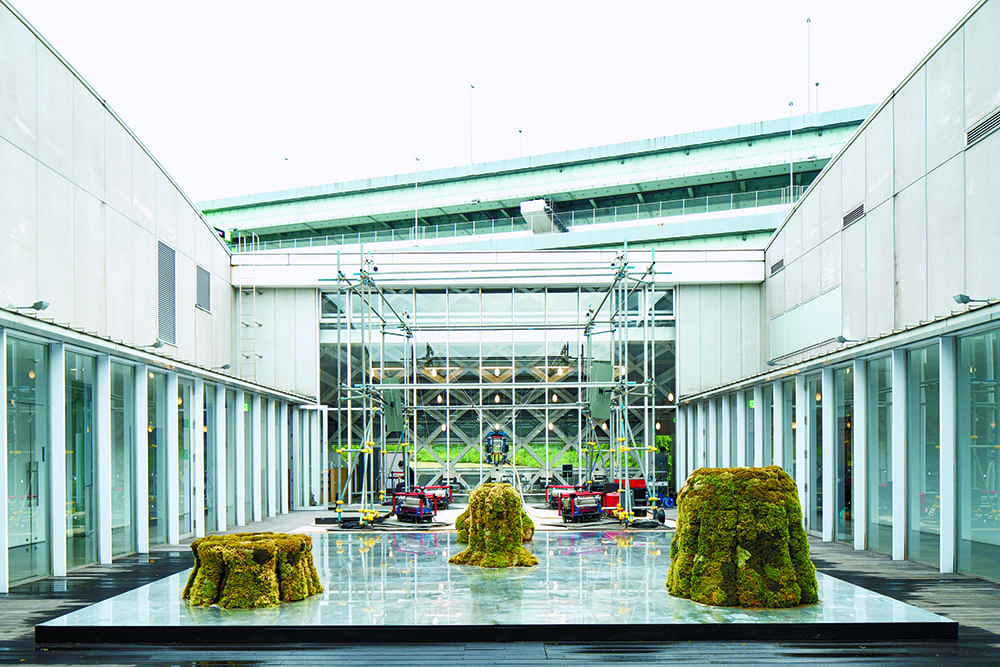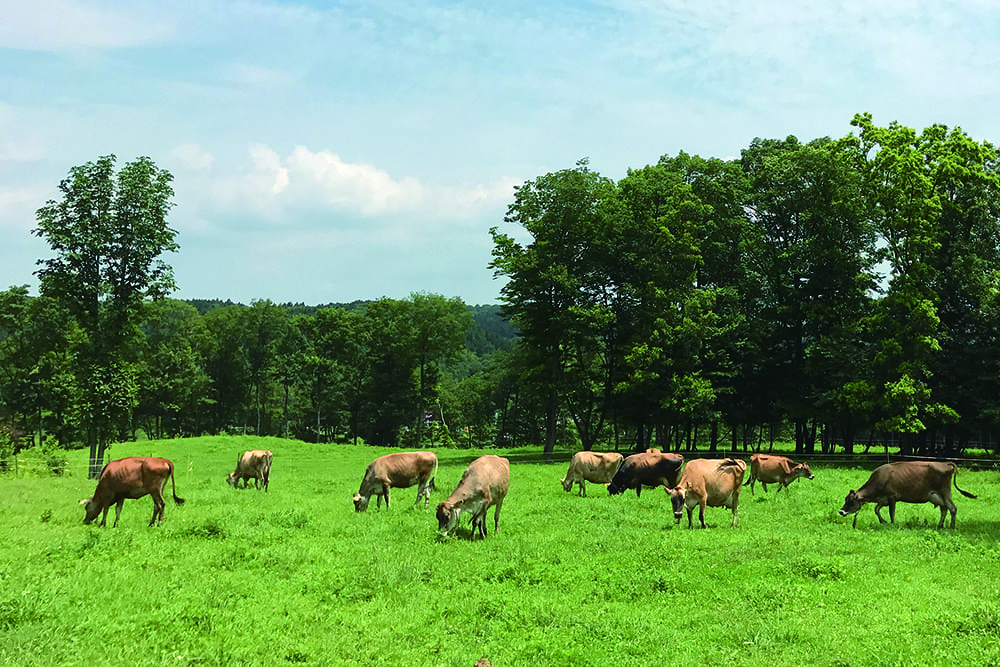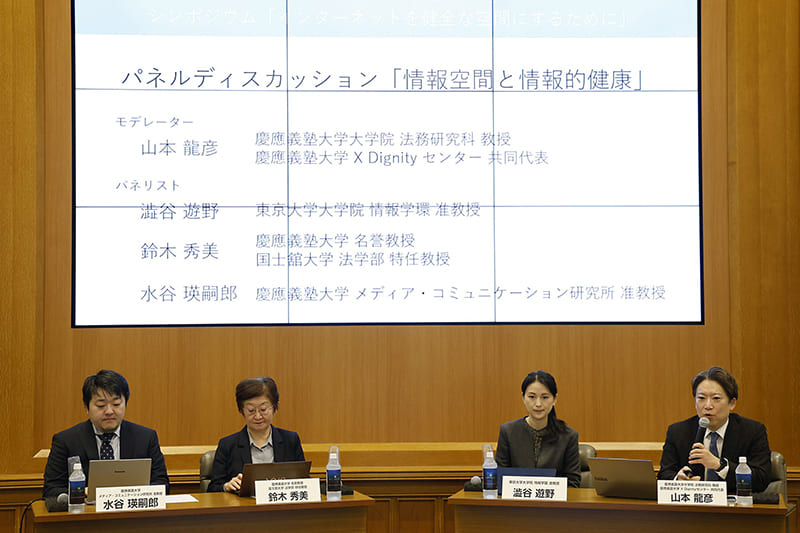April 28, 2022
Suntory works to sustain forests, groundwater
NAGANO
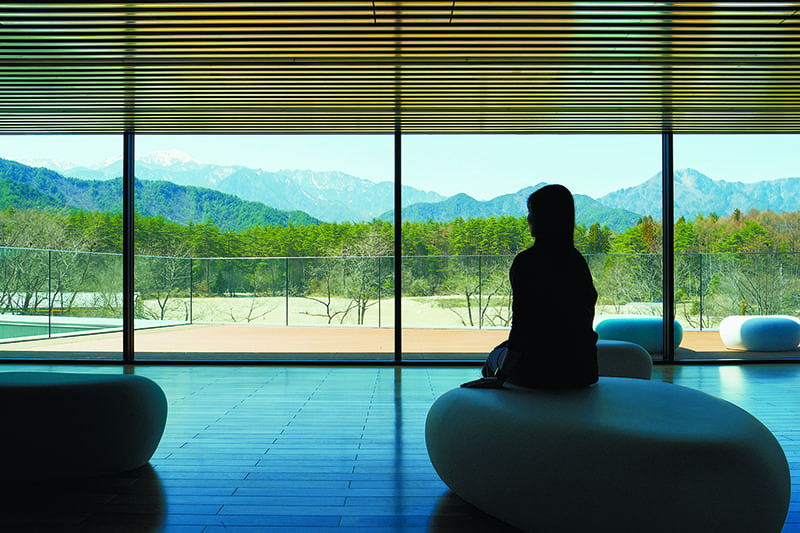
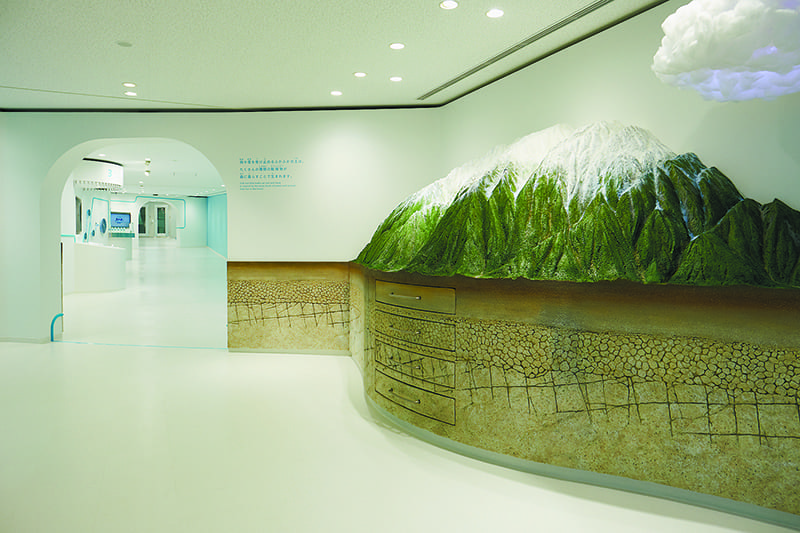
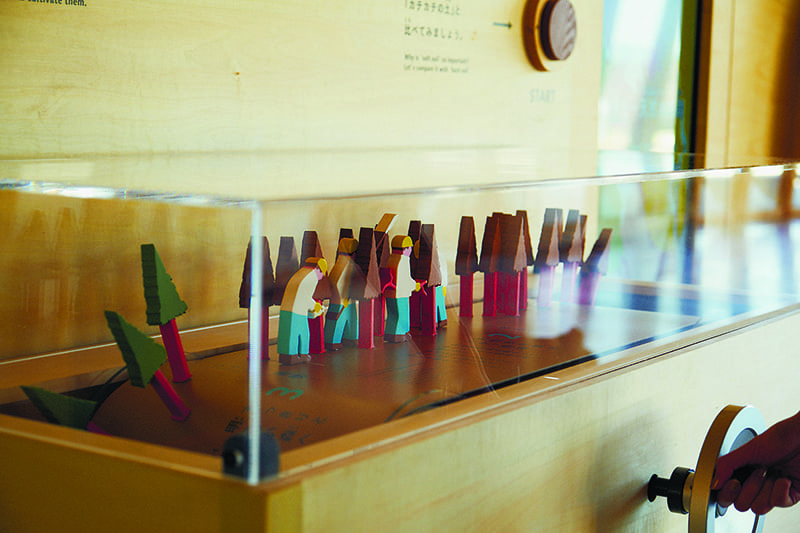
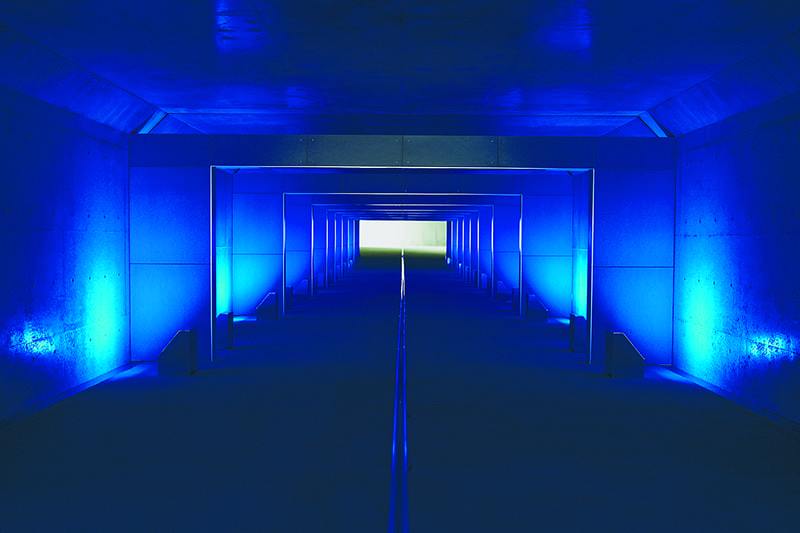
Top left: The observation room at the end of the tour offers spectacular views of Mount Gaki (elevation 2,647 meters) in the Northern Alps.
Top right and bottom left: With child-friendly models, exhibits explain how groundwater accumulates and the company’s efforts to preserve the natural environment. Bottom right: A tunnel from the parking lot leads to the factory premises.
| PHOTOS: KOUTAROU WASHIZAKI
Japan is a verdant country, with forests occupying two-thirds of its land. That might make you think it has abundant and reliable water resources. But the fact is, if Japan’s water is wasted, its groundwater resources will eventually be exhausted.
Many in Japan would remember the shock of learning at the end of 2020 that the popular French mineral water Volvic would no longer be shipped to the country. The water is sourced in the city of Volvic, at the northern end of the Auvergne Volcanoes Regional Nature Park in central France. Each year, 2.8 million cubic meters of water — enough to fill 1.4 billion 2-liter bottles — was collected from a well 100 meters deep. However, in recent years water problems had arisen in the surrounding areas, with rivers drying up and agriculture becoming impossible.
The likely cause was thought to be depletion of groundwater due to excessive extraction. In general, groundwater forms when rain soaks into the earth and slowly filters deep down to recharge aquifers, a process that can take decades. If water is pumped out at a rate faster than it can accumulate, it will eventually run out, causing land subsidence, desertification and salt damage.
One Japanese company that has worked hard to address the sustainability of such water resources is beverage maker Suntory. In 2003, it launched its Natural Water Sanctuary program, with the goal of “nurturing forests that each year will produce more than twice the amount of groundwater than is collected.” Suntory created the in-house Institute for Water Science and established “natural water sanctuaries” in forests near its four water pumping plants throughout Japan. The resulting 21 sanctuaries cover a total of 12,000 hectares in 15 prefectures.
Maintenance of the sanctuaries includes tree planting, but the most important work is in creating healthy, “airy” soil. Groundwater can accumulate only when rain permeates the soil instead of running off. Therefore, the company manages and conserves forests with an eye to nurturing vegetation and a larger ecosystem that contributes to healthy soil.
It is also working on the visualization of groundwater resources in order to measure the effects of forest maintenance. Data is collected in the field on water quality and quantity, soil, topography and geology and entered into a computer simulation of the flow of groundwater. As a result, the company is also now predicting the future, including the impacts of climate change on groundwater.
Soon a facility will open in the Nagano Prefecture city of Omachi, where children and adults alike will be able to learn for free about these initiatives and the water resources in Japan’s Northern Alps. The facility will be attached to the Suntory Kita-Alps Shinano-no-Mori Water Plant. From the parking lot, visitors will follow a path overlooking a gently rippling river, pass through a dark and fantastic tunnel, then ascend stairs and weave through a stand of trees as they approach the facility. From there, guided tours will take about an hour. After watching a video in the theater and viewing a model in the exhibition room (complete with English explanations), they will observe from above the plant’s bottling line for Kita Alps mineral water. After the tour, they will go to an observation room where they can view Mount Gaki and its surroundings while enjoying bottled water that spent 20 years filtering through that very same land.
There is also a cafe on the premises, where visitors will be able to relax while lying on the lawn. The facility, allowing you to enjoy nature while learning about the importance of water, will open to the public on May 14.
The Suntory Kita-Alps Shinano-no-Mori Water Plant
● 8071-1 Tokiwa, Omachi-shi, Nagano Prefecture
Tel: 050-3182-7911
Open hours: 9:30 a.m. – 4:30 p.m.
(admission until 3:30 p.m.)
Closed on Sundays, Mondays and Tuesdays, and also some winter holidays and plant holidays
Admission: Free
https://www.suntory.co.jp/factory/kitaalps/ (Japanese only)
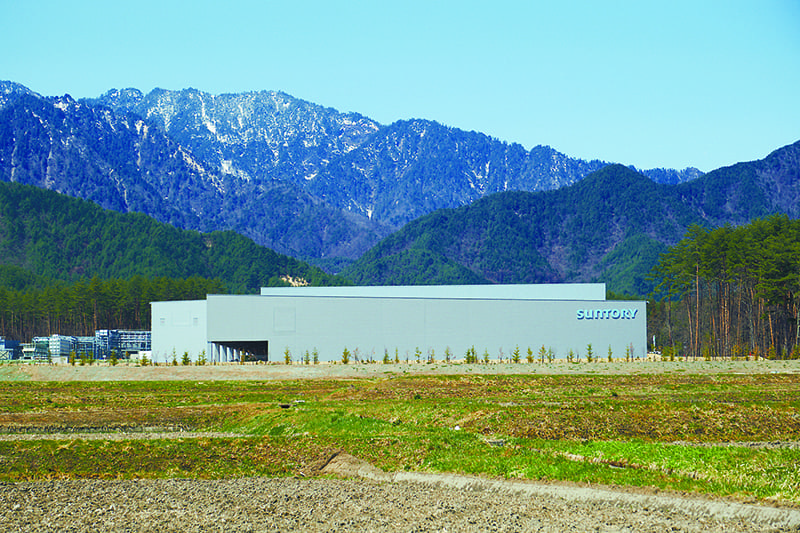
水の大切さと、地下水ができる仕組みを知る旅へ。
日本は国土の2/3を森林が占め、水資源は豊富だが、未来永劫その恩恵に預かれるかというと楽観視はできない。一般的に地下水は、数十年前に降った雨がゆっくりと地中に浸透し蓄えられたものだ。地下に貯まるより早いペースで水を汲み上げ続ければ、やがて水源は枯渇し、地盤沈下や砂漠化、塩害などを引き起こすことになる。
そんな水資源の持続可能性に、真摯に向き合ってきた企業が〈サントリー〉だ。「工場が一年間に汲み上げる2倍以上の量の地下水を生む、森を育てる」ことを目標に、「天然水の森」の活動を2003年にスタート。社内に「水科学研究所」を設置し、現在日本全国に4か所稼働している採水工場近くの森を中心に、日本全国15都府県21か所で「天然水の森」約1万2000haを整備している。
水に対する取り組みや北アルプスの水源の特徴を、子供から大人まで無料で学ぶことができる施設が、2022年5月14日、長野県大町市の「サントリー天然水 北アルプス信濃の森工場」にオープンする。敷地内にはカフェも併設、工場見学の前後にくつろぐこともできる。
Return to Sustainable Japan Magazine Vol. 11 article list page

